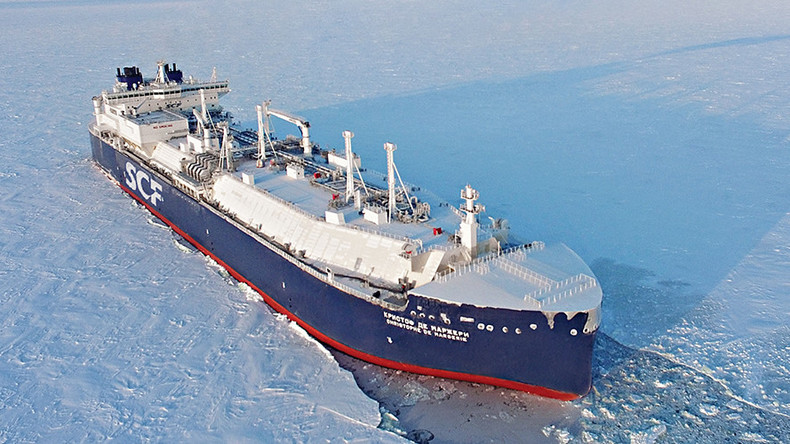US shale revolution spurs Moscow to look east for new markets
TOKYO — Russia’s push for Japanese participation in an Arctic energy project comes as the world’s largest natural gas exporter, faced with the rise of the U.S. as a rival, looks to Asia to diversify.
Russian gas company Novatek’s Arctic-2 liquefied natural gas project is located on the Yamal Peninsula, where conditions are remarkably harsh even for the natural gas industry, which is known for plopping down work sites in jungles and deserts.
The peninsula, whose name means “end of the land” in the indigenous Nenets language, boasts rich gas reserves. But with temperatures approaching minus 60 C at times, extracting it requires dealing with permafrost, and icebreaker ships are needed to transport it.
Novatek’s first project there began operating in 2017. The company has asked Japanese trading houses Mitsubishi Corp. and Mitsui & Co. to participate in the second — something the Japanese government has welcomed as an opportunity to encourage progress on a long-running territorial dispute with Moscow.
Russia is a relative latecomer to the LNG business, as most of its gas exports travel to Europe by pipeline. Before the Yamal projects, its only LNG plant was Sakhalin-2 in the Russian Far East, which Mitsubishi and Mitsui are also involved in.
A clue as to the reason for Moscow’s sudden enthusiasm for LNG lies in a comment by President Vladimir Putin that development in the Far East is pivotal to Russia’s advancement.
To maintain its position as a leading energy producer, the country needs to cultivate Asian markets, which are now driving demand. This requires not only pipelines to directly transport gas to China and elsewhere, but also facilities to liquefy gas for shipment to more distant destinations.
Two trends have encouraged Moscow to look eastward: concerns in European countries about overdependence on Russian gas, which resurfaced after Moscow’s 2014 annexation of Crimea, and the rise of the U.S. as a major oil and gas producer.
Facilities for processing shale gas into LNG and petrochemicals have proliferated along the Gulf of Mexico in the U.S. states of Texas and Louisiana. The surge in production of cheap shale gas has transformed America’s energy outlook from the days when Washington forecast that the country would need to import 390 million tons of LNG annually to meet its energy needs in 2030.
For natural gas exporters, this development has not only robbed them of an anticipated source of growing demand, but also — with the start of U.S. LNG exports in 2016 — led to the emergence of a rival supplier. LNG from Africa and the Middle East that had been expected to go to America has flowed into Europe instead, threatening Russia’s near-monopoly and prompting it to turn to Asian markets.
Faced with sanctions from Western countries over the Crimea annexation, Moscow is seeking support from Asian natural gas buyers — particularly Japan, the world’s largest LNG importer — to ensure the success of its Arctic development.
Tokyo is pressing Mitsubishi and Mitsui to make a decision, but doing so may prove difficult. While the trading houses understand the potential significance of the Yamal project as a new source of LNG, American LNG shipments are also starting to arrive in Asia.
Mitsui and Mitsubishi must examine whether Arctic LNG can be competitive under these conditions. They also have to consider ramping up production at Sakhalin-2, which already has a 10-year track record, as a potentially quicker alternative.
Complicating matters further is Russia’s relationship with Saudi Arabia, the world’s largest exporter of crude oil, which has also been hit by the shale revolution. Moscow and Riyadh have teamed up to oppose rising shale oil production and to cut output in an effort to stabilize prices.
Their cooperation may not stop there. Saudi Arabia is looking to become an international energy player, focusing initially on building a “global gas” business, Energy Minister Khalid al-Falih told The Financial Times. The Russian Arctic-2 project is a potential candidate for this effort, and al-Falih has indicated that Riyadh is interested in buying a 30% interest from Novatek.
“If Russia and Saudi Arabia take the lead on the project, Japan will be overshadowed,” a Japanese source warned. Tokyo, caught in the middle of the battle among Moscow, Riyadh and Washington for energy dominance, is unlikely to emerge unscathed.




